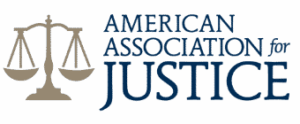
Hi - I’m Jeff. I am a lawyer licensed to practice law in Indiana. Our attorneys fight every day for the rights of sexual abuse victims. My team and I are ready to help.
This article is presented by the lawyers of sexual abuse in New Albany. We want to encourage you to learn more about the history of the city of New Albany.
New Albany is a city located along the Ohio River. Also the county seat of Floyd County, Indiana, it is considered as part of the Lousiville, Kentucky Metropolitan Statistical Area. The city is bounded by the Ohio River to the south and Interstate 265 to the north. The area that is now New Albany was officially given to the United States after the American Revolutionary War. Because of his achievement in capturing the territory in 1779, much of Southern Indiana, including most of Floyd County and the Town of Clarksville, was granted to George Rogers Clark. Clark later sold and distributed some of the lands to his fellow soldiers. Col. John Paul got the area of New Albany.
In July of 1813, New Albany was founded when three brothers – Joel, Nathaniel and Abner Scribner – from New York came to the Falls of the Ohio and purchased the land from Col. John Paul. They proceeded to name it after Albany, NY. Joel and Mary Scribner built their home in the area in 1814. In 1817, New Albany was incorporated as a town in Clark County. In 1819, it became the county seat for the newly formed Floyd County. From 1816 to 1860, New Albany was the largest city in Indiana. The steamboat industry played a major part in the city's economy. The second largest business was the American Plate Glass Work. Other businesses in New Albany include:
In 1847, the Monon railroad connected the city to the port at Michigan City, Indiana. New Albany would later be the first to establish a consolidated school district in the state.
During the American Civil War, New Albany served as a medical care center for wounded soldiers and a supply center for Union troops. In 1862, one of the first seven national cemeteries was established by President Abraham Lincoln in the city. Because of its relations to the South and the North, New Albany was boycotted during the war. By 1870, its steamboat industry ended.
Nonetheless, the development of railroads in the area created an industrial boom in New Albany as new economic opportunities started to come in. After the opening and closing of American Plate Glass Works in 1865 and 1893, respectively, the city went into an economic decline.
In the early 1900s, New Albany was the largest producer of plywood and veneer in the world. Its largest employer was the New Albany Veneering Company. The Sherman Minton Bridge was built in 1959 to carry Interstate 64 through the city. The American Institue of Steel Construction named the bridge as the "most beautiful long-span bridge of 1961." New Albany has been nicknamed the River City, the Sunny Side of Louisville, the Gateway to the South and North West, and Kentuckiana. As of 2010, it has a population of 36.372 people.
The Sherman Minton Bridge was opened in 1962 to connect downtown New Albany to Louisville, Kentucky. Carrying I-64 and U.S. Route 150 over the Ohio River, it is a double-decked through arch bridge designed by Hazelet & Erdale of Louisville. The bridge is named after Sherman Minton, a native of the city who was a former United States Senator and Supreme Court justice.
Situated on East Main Street in downtown New Albany, Scribner House was the home of Joel and Mary Scribner. Built between 1813 and 1914, it is the oldest building in the city. The two-and-a-half-story historic home is of the New England Federal architectural style. It was passed down through the Scribner family until Harriet Scribner sold it to the Piankeshaw Chapter of the National Society Daughters of the American Revolution before she died. On November 9, 1977, the house was listed on the National Register of Historic Places (NRHP). Twice annually, the house would be open to the public on the first Sunday in December and the third Saturday in May for events like Victorian tea time. All students in the county also have to visit the house during their third grade school year. The house has been left as it was since Scribner died, and appointments for tours can be made to view the home.
Contact our New Albany hospital abuse attorneys if you or a loved one were violated while staying at a medical facility. We can assist you in filing a civil lawsuit against your offenders and the hospital that was supposed to keep you safe. Call today for a free case review.


